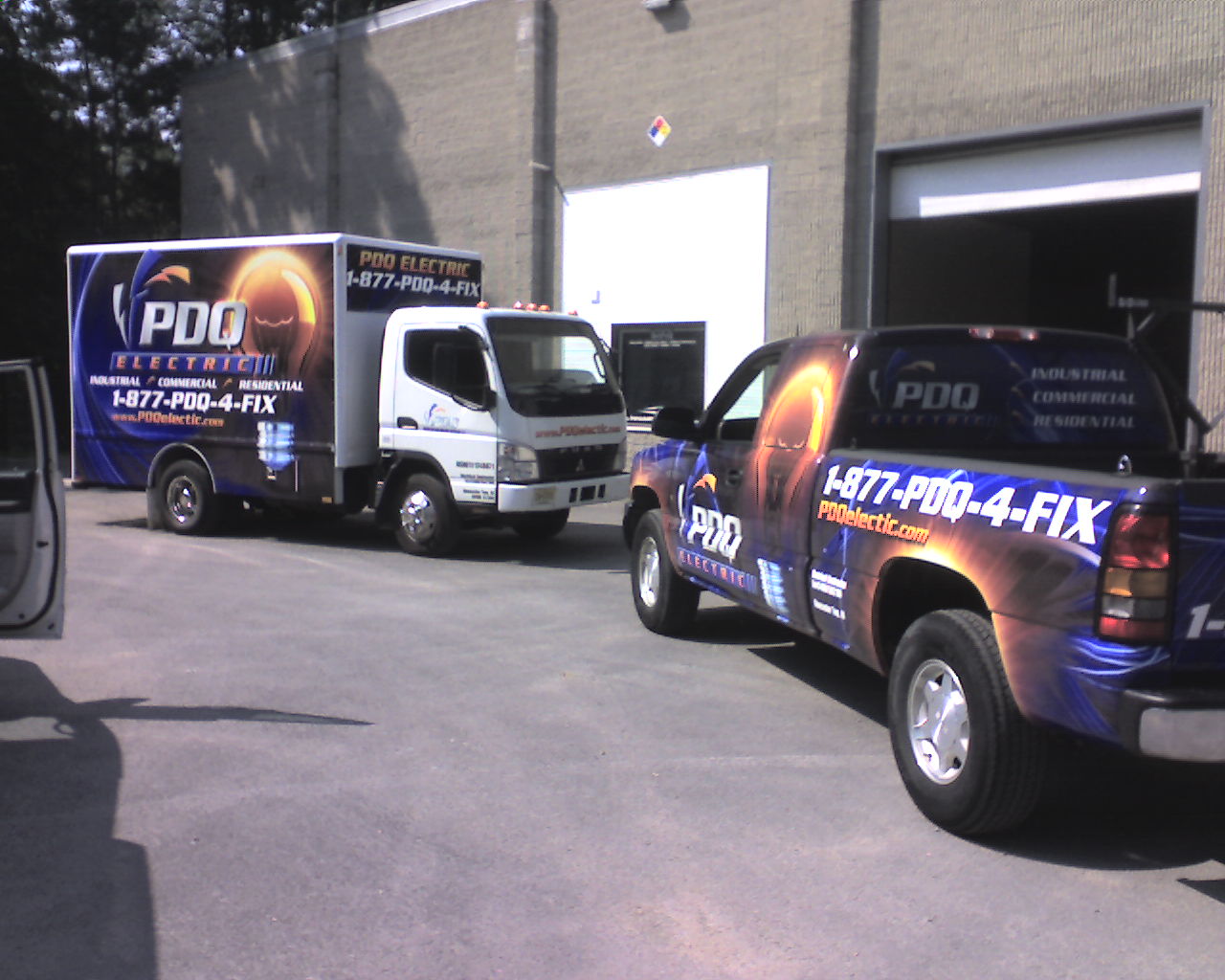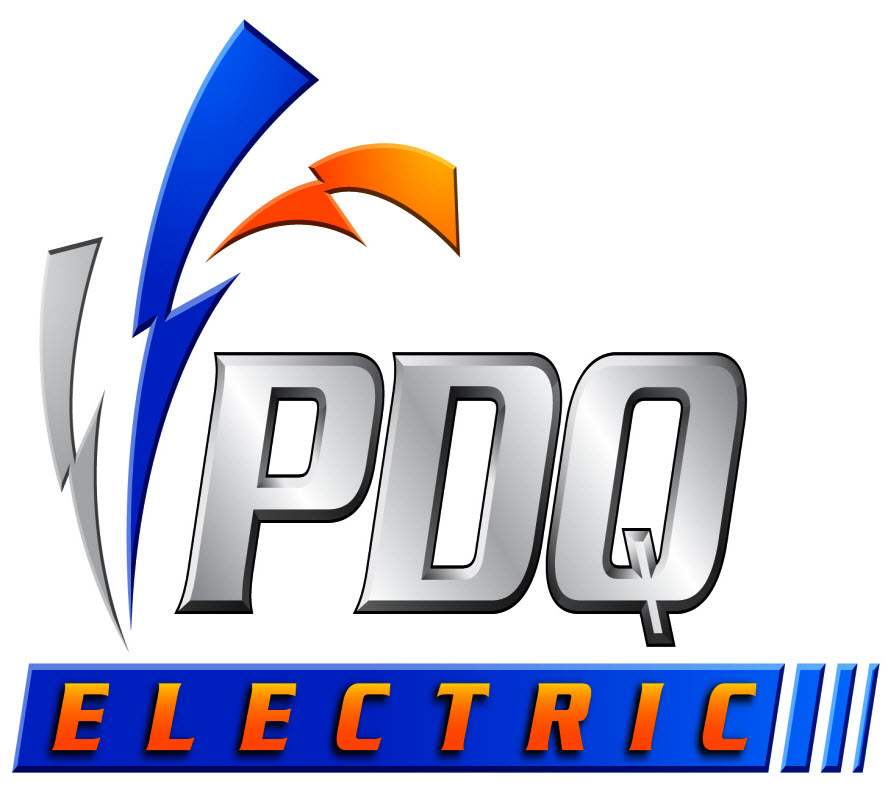 Industrial - Commercial
Industrial - Commercial  Electrical
Contractor
Electrical
Contractor 
PDQ Electric Corp
NJ, PA, DE, MD, NY, CT, DC, MA, RI
|

PDQIE - PDQ Industrial ElectricElectrostatic Powder CoatingPDQ Industrial Electric Website Under ConstructionWhat is powder coating?
Powder coating is by far the youngest of the surface finishing techniques in common use today. It was first
used in Australia about 1967.
Powder coating is the technique of applying dry paint to a part. The final cured coating is the same as a
2-pack wet paint. In normal wet painting such as house paints, the solids are in suspension in a liquid
carrier, which must evaporate before the solid paint coating is produced.
In powder coating, the powdered paint may be applied by either of two techniques.
The part is then placed in an oven and the powder particles melt and coalesce to form a continuous film. There are two main types of powder available to the surface finisher:
PreparationThe basis of any good coating is preparation. The vast majority of powder coating failures can be traced to a lack of a suitable preparation. The preparation treatment is different for different materials. In general, for all applications the preparation treatment for aluminium is as follows:
Oils and greases are removed in weak alkali or neutral detergent solutions and the surface is etched to remove heavy oxides. After rinsing, the aluminium is dipped into a chromate or phosphate solution to form a conversion coating on the aluminium. This film is chemically attached to the aluminium. After rinsing the aluminium is finally rinsed in demineralised water. Some non-chrome, dried in place pretreatment is beginning to come onto the market; currently, these are not recommended for exterior applications. The conversion coating has two functions:
The use of demineralised water reduces the presence of chemical salts on the aluminium surface. These salts have been found to cause filiform corrosion in humid conditions. For steel the preparation for interior applications may be:
For exterior applications:
The grain refiner is used after acid cleaning of steel surfaces and before zinc phosphating, otherwise the zinc phosphate coatings produced will be very coarse with low adhesion. The powder coating applied to a coarse phosphate will produce rough coatings (a little like "sandpaper") and possess low adhesion. For hot dipped galvanized coatings, which have been stored for more than about 4 hours before powder coating, the following process is necessary for exterior applications.
The etch is required to remove the zinc corrosion products which begin to form almost immediately the zinc is removed from the galvanizing kettle. The grain refiner ensures a fine phosphate is produced. How is it done -- electrostatic spray?The powder is applied with an electrostatic spray gun to a part that is at earth (or ground) potential. Before the powder is sent to the gun it is fluidised:
Because the powder particles are electrostatically charged, the powder wraps around to the back of the part as it passes by towards the air offtake system. By collecting the powder, which passes by the job, and filtering it, the efficiency of the process can be increased to 95% material usage. The powder will remain attached to the part as long as some of the electrostatic charge remains on the powder. To obtain the final solid, tough, abrasion resistant coating the powder coated items are placed in an oven and heated to temperatures that range from 160 to 210 degrees C (depending on the powder). Under the influence of heat a thermosetting powder goes through 4 stages to full cure. MELT, FLOW, GEL, CURE The final coating is continuous and will vary from high gloss to flat matt depending on the design of the powder by the supplier. Powder coating gunsThere are at east three types of electrostatic guns in use:
Not all powder is applied using guns. One system makes use of electrostatic tunnels. How is colour introduced?Colour is added to powder coatings during the manufacturing process, ie before the powder reaches the powder coater. There is little that can be done to change the colour consistently, once the powder leaves the manufacturing plant. Why powder coat?Powder coating produces a high specification coating which is relatively hard, abrasion resistant (depending on the specification) and tough. Thin powder coatings can be bent but this is not recommended for exterior applications. The choice of colours and finishes is almost limitless, if you have the time and money to have the powder produced by the powder manufacturer. Powder coatings can be applied over a wide range of thickness. The new Australian Standard, "AS/NZS 4506 - Thermoset powder coatings", will recommend 25 micron minimum for mild interior applications and up to 60 micron minimum for exterior applications. Care must be exercised when quoting minimum thickness because some powder will not give "coverage" below 60 or even 80 micron. "Coverage" is the ability to cover the colour of the metal with the powder. Some of the white colours require about 75 micron to give full "coverage". One of the orange colours must be applied at 80 micron. Colour matching is quite acceptable batch to batch. Installations and maintenanceDuring installations, the powder coating should be protected from damage due to abrasion and materials of construction such as mortar and brick cleaning chemicals. Once installed, maintaining the initial appearance of a powder coating is a simple matter. The soot and grime which builds up on surfaces from time to time contains moisture and salts which will adversely affect the powder coating and must be removed. Powder coatings should be washed down regularly (at least once each 6 months in less severe applications and more often in marine and industrial environments). The coating should be washed down with soapy water -- use a neutral detergent -- and rinsed off with clean water. When powder coated items are installed without damage to the powder coating and they are maintained regularly, they should be relatively permanent. The correctly applied coating, although not metallurgically bonded to the metal will not crack, chip or peel as with conventional paint films. | ||||||||||||||||||||||||||||||||||||||||||||
(877) 737-4349 (Toll Free)
(877) PDQ-4-FIX (Toll
Free)
(856) 625-6969 (Text
Messaging)
PDQ ia an Acronym for "Pretty Damn Quick"
|
PDQIE, www.PDQIE.com, info@PDQIE.com, quote@PDQIE.com, Ryan@PDQIE.com, PDQ Industrial Electric, www.PDQIndustrialElectric.com, info@PDQIndustrialElectric.com, quote@PDQIndustrialElectric.com, Ryan@PDQIndustrialElectric.com are marketing tools of PDQ Electric Corp, a NJ Licensed Electrical Contractor. Reddy Kilowatt® is a Registered Trademark of Northern States Power Company. The information on this website is believed to be reliable, but we cannot guarantee that information will be accurate, complete and current at all times and should be reaffirmed by a licensed professional before relying on it. PDQIE will from time to time revise information, products and services described in-on this Website, and reserves the right to make such changes without notice. Use of this Website is entirely at your risk. Materials and information in this Website (including text, graphics, and functionality) are presented without express or implied warranties of any kind and are provided "as is". It is your responsibility to evaluate the accuracy, completeness and usefulness of any opinions, advice, services and information provided.